Theatre History Podcast # 35
Get Thee to a Nunnery: Learning About Medieval Convent Drama with Dr. Elisabeth Dutton, Dr. Olivia Robinson, Dr. Matthew Cheung Salisbury, and Aurèlie Blanc
Many medieval convents were major centers of dramatic activity, with nuns and other members of their communities frequently participating in plays and other performances. However, because much of the evidence of this activity in the British Isles was destroyed during the Reformation, English-speaking scholars tend to ignore the crucial role played by women in medieval drama. The Medieval Convent Drama project, based at the University of Fribourg in Switzerland, is trying to change this through scholarship and performances. The project’s members join us to tell us about this surprising, richly-varied, and woman-centered drama.
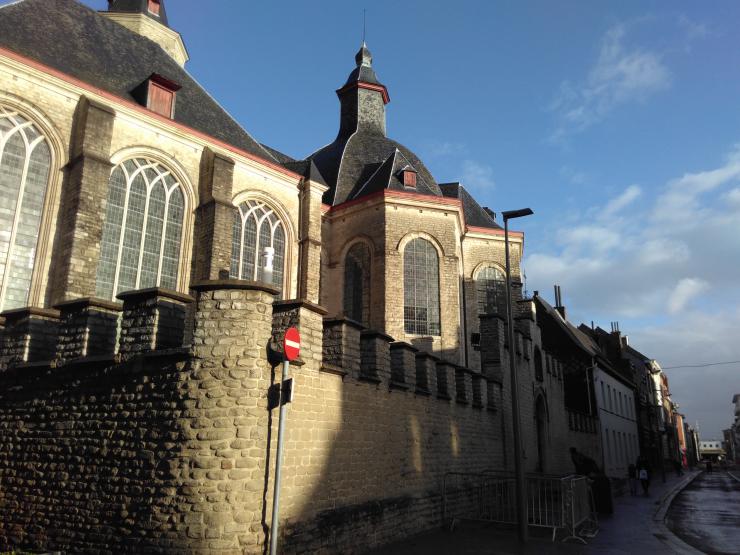
Links:
- Learn more about the Medieval Convent Drama project at their website.
- Watch the Medieval Convent Drama’s production (with Frideswide Voices) of the medieval English play Herod’s Killing of the Children in New College Chapel, Oxford.
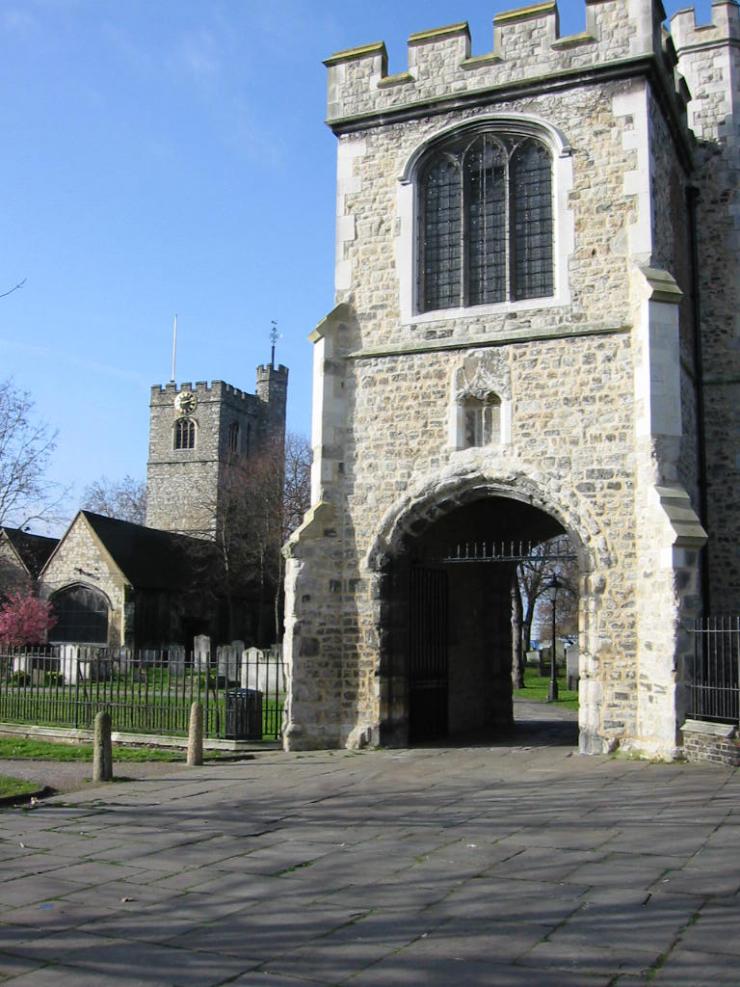
You can subscribe to this series via Apple iTunes, Google Play Music, or RSS Feed or just click on the link below to listen:
Transcript:
Michael Lueger: The Theatre History Podcast is supported by HowlRound, a knowledge commons by and for the theatre community. It's available on iTunes and HowlRound.com.
Hi and welcome to the Theatre History Podcast. I'm Mike Lueger. Who was the first woman to write a play in the western world? There's a pretty good chance that she was a nun in a convent. During the Middle Ages, these religious institutions gave women a chance to explore intellectual and artistic work that would have been difficult for them to pursue elsewhere. Now the Medieval Convent Drama Project, based at the University of Fribourg in Switzerland, is exploring this fascinating and underappreciated aspect of women's theatrical history. Today we're joined by Dr. Elizabeth Dutton, who is a professor of Medieval English at the University of Fribourg, Dr. Olivia Robinson, who is a senior researcher and co-investigator on the project, Dr. Matthew Cheung Salisbury, who is a lecturer in music at University and Worcester Colleges at Oxford and Aurélie Blanc, who holds an MA in Shakespeare from Kings College in London.
Hello, everyone. Could you start out by telling us a bit about what convents were like in the Middle Ages and how the lives of the women within them were unique.
Olivia Robinson: It was really different depending on which convent it was. You had very big ones and very little ones that were not very wealthy. I thought I would talk a bit about how the convents were really embedded in the community at the time. Often the nuns were local women, generally pretty wealthy, because you had to pay to enter a convent, so they would be the daughters of the local duke or the local baron and they would keep a network with their families. They would sometimes go and visit their families. Their families would come and visit them. They were supposed to stay enclosed, but sometimes they did go out to see their families.
You also...You didn't only have nuns in the convents. You had laywomen who would work for the nuns. You would have chaplains, priests that were needed for mass and also laymen who would also do some of the work for them. Finally, another way that these women were embedded in the community around them is that they were often landowners. They could own just a little bit of land if it was a poor nunnery or they could have a lot of land and have to manage farms that were on those lands, had to hire stewards to do that.
Finally, another important aspect of their lives were the daily offices. Every day they had hours in which they would meet and sing and pray together. That would really rhythm their daily lives.
Elisabeth Dutto: Another thing that we've been realizing during the research that we've done so far is that the communities are sometimes quite mixed. We tend to think, oh, a convent was a Benedictine convent or it was a Carmelite convent and therefore the women in that community were all living a sort of homogenous life, but in fact, we've discovered, for example, that the Carmelites were taking over other orders. You might have a convent in which, for example, the Carmelites took over some Benedictine convents and they took over some beguinages. You might have—during the takeover, as it were, you might have three women in the convent who were still Benedictines and practicing the Benedictine life and then other women who were Carmelites living according to a different rule and beguines, who were a sort of informal order of women who were able to go out into the community much more freely than the nuns. There seems to have a been a bit of disorder and chaos and also quite a lot of kind of rivalry and takeover from one order to another, so it's not quite this kind of prayerful ordered existence at all times that we perhaps imagine from the Sound of Music or whatever.
Olivia: Certainly the Carmelites that I've been looking at in northern Belgium, they're doing activities like they're running a little school for local girls, some of whom would have become nuns, but not all of whom seem to have done. They're actually embedded in the community in quite an interesting way. That's both a source of revenue for them, because people were paying them to teach the girls, but it's also, I guess, a way of knitting kind of relationships to different people in the bigger communities that surround them. They're doing all kinds of activities, I think, aren't they? Yes, you're right, it's not just praying and singing, even though that's a very important structuring part of their day. There's all sorts of other things they're doing outside of that.
Michael: I'm glad we've got the Sound of Music reference out of the way early so we can move on from that.
Olivia: It's Austria, not Switzerland. We have to say that about the Sound of Music.
Michael: These sound like really complex communities, much more so than we might expect. Now, what are the members of these communities doing writing and performing plays and how do these plays fit into the larger context of Medieval drama?
Elisabeth: Broadly speaking, the purpose of the plays seems to be devotional, in the sense that either the nuns, through performing the plays, were themselves entering imaginatively into the Biblical activities, Biblical stories that they were displaying. In that sense, there's a very strong connection with what was happening in affective literature. For example, we have books like the treatise of Margery Kempe in Middle English, where you have a woman who is, in her lay way, exemplifying the kind of effort to imagine herself—she imagines herself at the birth of Christ, for example. This is a recognized aspect of female devotional writing beyond theatre. In some ways, the plays are doing the same kind of thing. They're enabling the nuns to imagine you are attending the birth of Jesus and how do you help the Virgin Mary, that kind of thing, but also to stimulate devotion perhaps in the audience. The audience is obviously other nuns, but possibly also a general population more public audience and already I think you had a—
Aurèlie Blanc: I have an example from Barking Abbey in England where, before the play, there's a little bit of text that sort of says why the play was...There seems to have been a play before the one that we have, that it was changed, modified and also placed at the end of masses in the morning. It says that the abbess did that to eliminate sluggishness and stimulate devotion in the people. We think, for this abbey at least, that the people were the parishioners because it was really an abbey that was quite closely connected to the community around it and they would come to the abbey church for certain feasts and sometimes they had some problems as well with the convent. That was another motivation for those plays.
Elisabeth: I suspect, again, or I wonder are they using plays to teach as well? Certainly, again, the nuns I've been looking at with the school, are some of these plays being used in a didactic context to teach some devotional thinking but also kind of moral thinking, thinking about their place in the world. Some of these girls will go back out into the world with this education. They won't all become nuns. I'm wondering if there's an educative aspect to some of these plays as well. It's quite difficult to be sure, but we do know from evidence that we've done...Olivia and I had a wonderful few days visiting some nuns in Belgium.
Olivia: Carmelites.
Elisabeth: It's still very much part of their devotional practice that they perform plays, that they put on plays together just in their own community usually, but they have recreation every day. Some of that recreation time is spent putting on plays. The nuns explained that this helps them. It helps them to practice working as a community, depending on each other, cooperating with each other, imaginatively entering the lives of the characters that they're performing, interestingly enough, and also helping each other laugh. The lovely Carmelite sister that we were talking too there was saying you don't even have to be a good actor. In fact, the bad actors are more entertaining for the community to watch.
Michael: Matthew, I understand that you've been looking into how these plays fit into the liturgy. Does that mean that these plays were meant to be part of worship services or do they stand apart from those ceremonies?
Matt Salisbury: You've probably heard of liturgical drama, a drama where you get a sense and a representation of something within the context of the service. That's not necessarily what we're looking at here. In a sense, what these plays seem to contribute to understanding, but equally, they're a connection between the thematic material, which the nuns might have heard in the context of services on a particular day, for instance the nativity or the purification, and what the content's plays may be. In a sense, as we've been hearing, it's really all about education and coming to a clearer sense of what the events of scripture might have been like, might have looked like, in a sense, how you can imagine yourself being part of them. That having been said, there are lots of allusions to liturgical texts and to liturgical music in the contents of some of these plays. That must only have heightened the experience of those who were participating.
Michael: How does this dramatic activity play into the gender dynamics of the Middle Ages? For instance, I understand there was one convent in France, which staged a play in which the role of God was played by a woman. Liv, you write about another case in which there were plays being written and performed in what you describe as a, "Probably exclusively female milieu."
Aurèlie: There was an anxiety towards the end of the Middle Ages when this play was written about women being around the alter, touching the alter, touching the sacraments. This goes with this change in the role of the priest. The priest really becomes the one who handles the sacraments, so that makes his role even more sacred and it sort of pushes women away from that.
In the Barking play, there's an emphasis on the female characters. There are more scenes that are added with female characters and there is a scene that is rarely in those types of play. This is, by the way, just so you know what play I'm talking about, this is a play that happened on Easter day and you had three Mary’s going to the tomb of Jesus and the tomb is empty and then you have an angel telling them that Christ is resurrected. In the Barking one, those women see Jesus resurrected and there's a scene where they fall to his feet. That scene is very rare in that type of drama. Barking is the only one where they actually touch him. They kiss his feet. You have women here that have direct physical access to the body of Christ and they are the ones who first understand the resurrection and then tell the disciples and the community about it.
If you compare this play with a very similar play that was done in a male community. The women are the first ones who see the empty tomb, but they don't understand what's going on. They just lament the loss of the body of Christ and then you have to wait for Peter and John to come in and to get it and transmit it, announce it to all of the other disciples around. You have quite a strong statement from the nuns here, a statement about their own identity and their own functions as nuns. As women, they probably identify with these holy women that they are representing and they are the one who have direct access to Christ and then can transmit the word of God to others, to the community. That can be a statement responding to this anxiety in the church. It can be a statement as well for the audience, they were the parishioners. It could really reinforce their authority and their holiness by association with the holy women that they are representing.
I think, more broadly speaking, it's true of all the convent plays that I've thought about. There is a...They can be seen as kind of destabilizing, a little bit, a prevailing gender hierarchy that seems to have been perceived in the Middle Ages and it's certainly how we now perceive the Middle Ages, that men are considered kind of first class citizens and women are kind of somewhere way behind that. There's all sorts of devotional literature, which does that, Margery Kempe, that Elizabeth was talking about earlier that was not theatrical. I think certainly these plays, the nuns seem to be going out of their way, in very different convents, in very different contexts and very different narratives to put women into these Biblical stories and, where they are already there, to really beef up their role and to really think about their role deeply. There does seem to be something about kind of feminizing the Bible and feminizing access to the Bible that's really quite inspiring, I think.
Michael: Yes, and Liv, you've looked at a couple of plays from a convent in what's now Belgium. I understand you found some pretty interesting kind of textual evidence that shows possibly one of these plays kind of in the rehearsal process.
Olivia: Yes, indeed. We're lucky enough to have a play book that survived for this particular convent in Huy, which is now Belgium. The convent itself doesn't survive anymore, but the manuscript does. In one of the Biblical plays in particular, it's a nativity play, we know the name of the nun that's copied it and we can trace her in the archive and we can trace her hands in the manuscript. In certain scenes in that nativity play, she has only copied half of the scene and then she's left a blank space and then carried on. What this is suggesting, I think, that she knew that those scenes were not...
There seems to be an acknowledgment that there's something missing that she wants to add in. In a couple of cases in that manuscript, those gaps have been filled by what looks like people improvising scenes. There are lots of different people copying in a couple of lines each and we can tell that because their handwriting is different, so we know that these are different people wielding the pen. Stage directions are crossed out and moved around. Some things are done in the margins, some features are added in the margins. This really seems to be evidence, I think, of a play in gestation, a play kind of in the process of becoming. For parts of this play, the nuns are actually improvising and then writing down what they've improvised and then thinking about how to make it better, adding another speech in, moving a speech a bit later maybe. There's these quite anarchic moments visually in the manuscript that I think are a testament to a play that is in the process of being created and thus a play that is being formed.
Elisabeth: The other thing to mention about that play book is that it includes not only scriptural drama and the examples we've been talking about so far are all plays which adapt scriptural stories, but it also includes morality plays, allegorical plays. The nuns were...It seems as if the majority of what they were doing was scriptural, liturgical scriptural stuff, but they were also writing allegorical plays.
Olivia: One of those allegorical plays is actually a play drawn from a very, very popular allegorical poem, a book called the Pilgrimage of the Life of Man. It's a vast, vast poem and they draw on one particular episode from it and kind of developed it into a dialogue with the character’s kind of embodied on stage, which would tend to suggest, I think, at points a sophisticated approach to the literature that they were reading as well as the Bible.
Michael: One of the things that your project has been pointing out is that this is this deep, rich tradition, but we don't hear about it as much in the English speaking world. Aurélie, you've been talking about Barking Abbey. Could you tell us a little bit more about why that particular abbey is so important to our understanding of Medieval convent drama?
Aurèlie: As you said, there's not that much emphasis on England. There's Barking Abbey and there's Wilton, but that was only discovered much, much later. Barking is one that's one of the oldest, sort of the wealthiest nunneries in England. It was a Benedictine abbey. All of the nuns there were, as we said before, quite high rank, quite wealthy women. There was about 30 of them. The play that we have for Barking, it's quite different from the one we have for Huy, for instance. You can already see the diversity amongst the plays in convents. This one is closer to what Matthew was mentioning before. It's generally categorized as liturgical drama and there's a whole huge debate about the term "liturgical drama" and what it encompasses, but again, broadly speaking, this play that was done in church during the liturgy. There were some the text are taken from the liturgy, from the gospels, although you can have some additions. All of them are a little bit different. They were performed by people in religious orders, though it can be monks, nuns or canons. It's not very clear whether the plays were perceived as drama or as part of the religious ceremony. I'm going to call them plays because it's easier, but especially at the very beginning when they started, around the tenth century, I don't think they were perceived as drama.
There are different kinds of liturgical plays, but the oldest and the most frequent one is the Visitatio Sepulchri and that's the Barking one I just told you before quickly. It's Easter day, three Mary’s going to the tomb of Christ and that's the basic pattern of it. Then you can have sort of added scenes depending on which Visitatio you're looking at. The one from Barking is a late fourteenth century one and it follows this basic pattern but has its own specificity. One of the specificities was the one I mentioned before with the scenes where the Mary’s touch and kiss the feet of Jesus. Other specificities, well it's a nunnery, so the Mary’s, as in other convent plays, are played by nuns and not by monks as you would find if it was done in a monastery. That makes it easier for the nuns to identify with these holy women, but it also makes it easier for the audience, again, to make the link between the nuns, the community, religious women and those holy women. It gives them a certain authority.
Then another thing that you find in Barking that you also find in other convent plays, other Visitatio Sepulchri, is that you have this little ceremony before the beginning of the play where the three nuns who are going to play the Mary’s go to a side chapel and they change. They change into white surplices so they will have these white robes and white veil and then they come out and they confess to the abbess before they can perform. That never happens when men play the Mary’s and doesn't happen with the clerics who are playing Christ and the two angels in this play either. It's really sort of this rite of purification that is specific to liturgical convent drama.
Michael: So you've been talking about sort of your studies, your project studies this whole sort of genre of Medieval convent drama, but you're also staging some of these works. Can you tell us about what that process is like and what you've learned by doing this?
Olivia: The first production that we did for the project was actually not of a convent drama but of a related play from the Digby manuscript, the Killing of the Children and Purification. This play we started with because it's, apart from Barking Abbey, the only concrete evidence that we have of female performance in England. An important reason for choosing the Digby play is that it presents the Presentation in the Temple and The Killing of the Children and those are the two episodes that occur repeatedly. We're finding more and more that these are episodes that convent drama often treats. They seem to have had a particularly female angle, which makes sense. The Purification is about Mary being presented in the temple and The Killing of the Innocents, obviously, is largely about the grieving mothers. Although we can't prove that Digby was itself a convent play or anything like that, it is a play in England treating the same kind of things that convent drama in England possibly treated, because we know convent drama on the continent covered those subjects.
Elisabeth: It has a stage direction which calls for a group of virgins, as many as a man will, which sounds slightly dubious. They seem to have been...They sing and dance in the play. They perform some of the liturgical music that is incorporated into the drama. One of the reasons that we chose this is a play was the female performance and we wanted to do it working with children, because it seems as if these virgins were probably young girls and that possibly it was acceptable for girls to perform pre-puberty. There's evidence from sources on the continent, in Holland and so on, as well. This was also another kind of form of female performance. We worked together with Frideswide Voices, which is a young girls choir in Oxford, partly because we just wanted to see what the effect of having young girls in a play working with adults and so on would be.
The process was complicated by having these different constituents needing to coordinate them, but we certainly, I think, learned a lot from doing it, not only about the effects of young girls performing, which is very, very, very powerful. A lot of us would have seen, for example, choirboys performing and there's something about put a boy into a liturgical vestment and have him sing with an angelic voice and they seem transformed. They are innocent. Staging a play of Herod's Killing of the Innocents with these... I mean, okay, we didn't kill any of the girls, obviously. We speared some dolls. But having the children around that was really, really shocking, I think, and powerful for the audience in a way that, had we just been working with adult actors and adult performers, it wouldn't have been.
Olivia: The other thing that really struck us during that performance was that we performed in New College Chapel, which is a very long space, so you're performing in the traverse, basically, but a really, really long traverse. What it meant was we had Herod's palace at the entrance to the chapel, that end of the chapel as you came in and the purification and the temple on the alter steps, so you had a very, very, very great distance between Herod's palace and the purification in the temple. The audience, depending on where they were sitting, identified with different aspects of the production. The people who were sitting at the Herod's palace end, for them the purification was something very distant, very sort of holy, but untouchable because it was so far away from them. They felt very implicated with Herod and his soldiers. They felt kind of guilty almost because they had been laughing. They're very funny, Herod and his soldiers. They'd been kind of almost on Herod's side, so they felt very kind of cut off from the holy bits at the end. Equally, the people who were sitting at the holy end were kind of separated from Herod.
If one of the points of these plays is to encourage the audience to situate themselves, for example, as guilty with Herod or being purified with Mary in the temple, then where people are sitting is going to have a very strong influence, interestingly. In performance you realize that it's not just to do with the state of your mind and the words on the page, but it's also to do with physically where you are in relation to the action. That's actually, I think, a really important thing that we lose when we study something on the page. We know that convent plays were performed in holy spaces. They were sometimes processional. For example, they might have moved around. Bits would be in the cloisters and then there would be a bit in the church and so on. Now that we've done the Digby play and we're moving on to perform the actual convent plays, that's going to be a really important aspect of our inquiry, I think. Aurélie has been networking with the nuns to set up our next production.
Aurèlie: Oh yes, I have. Yeah. We're trying to sort of link our project to where we're doing the projects through the University of Fribourg. We thought maybe we could do this in performance, so I've been to few convents now around town to try and see if we can perform some of these plays in the convents in their churches. We're also trying to convince them to perform the plays themselves, but that's proving more difficult.
Elisabeth: I would say it seems to be more difficult not because of the sense of piety or holiness, but just simply because the nuns appear to be of a certain age now. In the Catholic church we are looking at a lack of vocations, really. Vocations for all, but certainly for women are tailing off so the nuns in these convents all seem to be reaching the age of seventy-five-plus as far as I can see, or the vast majority of them are. I was surprised. I hadn't anticipated that being the reason they didn't want to perform. I thought they might not want to perform, but that really wasn't an issue for them. Performing in front of people, acting, that wasn't an issue in terms of their piety or their faith.
Aurèlie: As you said, you mentioned the Carmelites. They still do theatre and I went to see some Cistercians and Carmelites last week in Fribourg and they also told me that they use theatre sometimes.
Elisabeth: In their daily life?
Aurèlie: In some parts of the gospels and some things like that. Hopefully we're going to perform in the churches of a Carmelite convent in Fribourg, a Cistercian one and a convent of Ursulines.
Elisabeth: We're going to be doing the three plays. The Christmas play, that's the first one we're doing, at Christmas. Then at Easter we're going to do one of the resurrection from the tomb plays.
Aurèlie: Yes, the Easter plays.
Elisabeth: In the convents around Fribourg.
Aurèlie: Oh, and we're going to be using all women actors as well, which I think is an important point, because we want to see what the effect of having women in these male roles is. Obviously in the case of the nativity, there's quite a few male characters, the magi, Joseph, you know, so we're going to be using an all-female cast in these plays to see how that functions.
Michael: Whether it's from your scholarship or your performances, what do you ultimately want people to take away from your work on this project?
Elisabeth: I think the most important thing is just to emphasize that there were women doing Medieval theatre. If you read histories of Medieval theatre, one of the first things that you learn is that women were not involved. They might have been allowed to make costumes, but that was it. In fact, this is not the case. That's the most important thing. There were women involved in Medieval theatre. Sometimes their contribution has been lost and that was because, of course, when the convents were dissolved in England, probably scripts were destroyed or taken to the continent, but also, of course, convents are, by their nature now, enclosed so it's very difficult for us, for ordinary people, everybody in everyday life to have access to the traditions of these convents. It's one of the things that we're finding, actually, when we talk to the nuns, that they are very keen for us to publicize their work, as it were, to talk about it precisely because they can't through the normal channels.
The nuns have this amazing tradition and they have a whole... Gosh, the upstairs attic is entirely dedicated, the whole of the upstairs in the convent are the costumes storage. Sister Carmela said that she was in charge... She was like the... What's the word? Wardrobe mistress. I said, "Oh, is that because you're really interested in costumes?" And she said, "No, it's because I'm the only one who can still get up the stairs." That really tells you that they're old, they're not using social media, they're not out in the world. What they're doing and what they have always done, it seems for centuries, is not publicized.
Olivia: What I want to achieve as well is I want us to be part of what is a bigger scholarly movement to kind of valorize and really think carefully about the intellectual and cultural contributions of monastic women of all stripes in the Middle Ages. I think, as Elizabeth was saying, there's been a tradition in drama scholarship to see it as all male dominated. Similarly, in scholarship on religious communities there has been a tradition in the male communities, the big male monastic houses and then just sort of say, "Oh and I bet the women were just a bit like that, but probably less intelligent and less good and they had less money and they were smaller." Actually, I think there is a movement now in scholarship on convents, historical scholarship on convents to say, no, actually the women's historic experience is distinct. It is not just a carbon copy of a male historical experience. It is shaped by different kind of agenda and different ideas and different preoccupations and we need to be much, much more attuned to the individual nature of female monastic experience. I want our project to contribute to that movement on the drama front.
Michael: We'll post a link to the Medieval Convent Drama Project's website where you can learn more about their research and watch their performance of Herod's Killing of the Children in New College Chapel at Oxford. Elizabeth, Liv, Matthew and Aurélie, thank you so much for joining us.
If you'd like to continue today's conversation, please visit HowlRound.com and follow HowlRound and @TheaterHistory on Twitter and Facebook. A big thank you to the staff at HowlRound who make this show possible. Our music this week comes from the Medieval Convent Drama Project's production of Herod's Killing of the Children and it's performed by Frideswide Voices. Thanks as well to Tim Cress who designed our logo. And finally, thank you for listening.


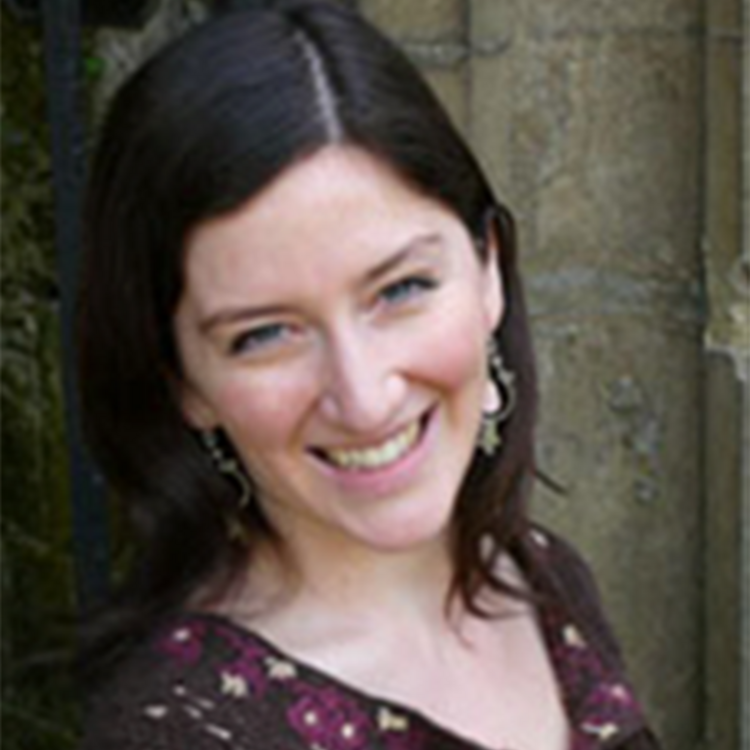

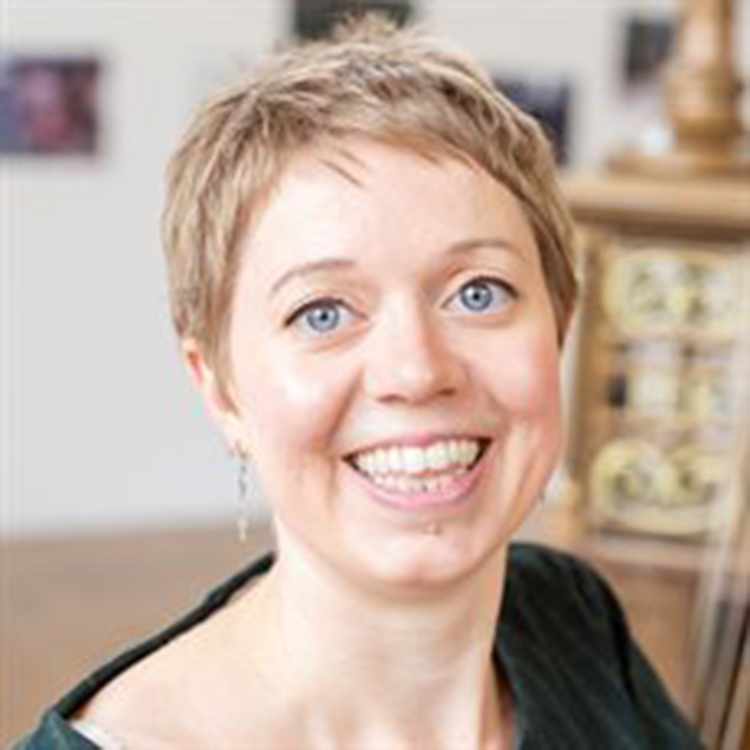


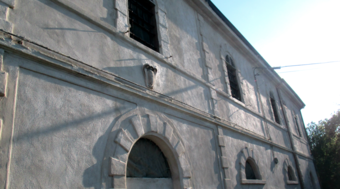


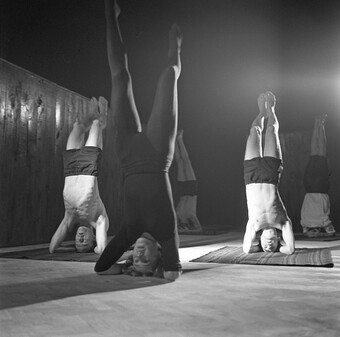
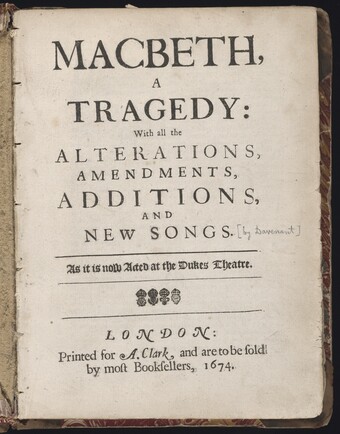


Comments
The article is just the start of the conversation—we want to know what you think about this subject, too! HowlRound is a space for knowledge-sharing, and we welcome spirited, thoughtful, and on-topic dialogue. Find our full comments policy here
updating my lecture notes. Sisters of Hrosvitha!